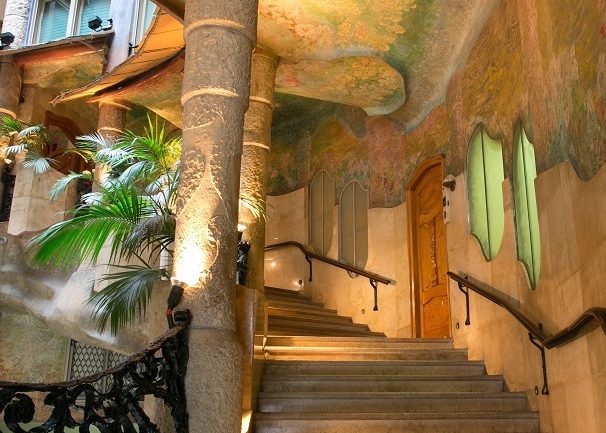The researchers agree —stair climbing can help us maintain a healthy body. At Artbuk, we claim it can benefit your eyes and soul as well. Ever since stairways took on a representative role in medieval castles, their forms have continuously evolved alongside technical advancements and stylistic changes in architecture.
Similar to the previous centuries, staircases in the 20th-century edifices were designed to awe the guests and express the power and wealth of their owners. When the Art Nouveau movement brought about dynamic and decorative architectural forms, staircases were given an almost dream-like appearance. This novel approach is best illustrated by Antonio Gaudi’s designs: his stairways give an impression of magical portals leading to the enchanted world of whiplash floral forms. The Art Deco style that followed replaced the highly decorative organic shapes with more simple yet sophisticated ones and, as a result, the staircases took on much more geometric and clean forms.
The totalitarian architecture of the first half of the 20th century, despite certain stylistic differences under specific regimes, marked a revival of forms inspired by the classical architecture of the Roman Empire. A wind of change swept through Europe in the 1960s and 70s. Take the (in)famous Cracovia Hotel in Krakow, where a mixture of high-end materials and lax, creative solutions trying to break free from the old paradigm expressed a longing for a brighter future after the traumatic experiences of war.
Following technological advancements, traditional staircases began to be widely replaced by elevators and escalators, and downgraded to a much more inconspicuous role of fire evacuation routes somewhere in the back of the buildings. However, the wind of change is rising again and some contemporary architects now turn back to and re-interpret the more traditional solutions. For example, the late Zaha Hadid’s designs successfully marry minimalism with visionary futurism.
No matter the type — straight or winding, single or double, L-shaped or U-shaped — any staircase can give an interior a unique character and appearance. In 2021, when our travelling plans are put on a temporary hold by the uncertain situation around the globe, I encourage us to re-discover our own cities. So let’s open the door, climb the stairs and let a building whisper its unique history to us.
transl. Paulina Kralka

